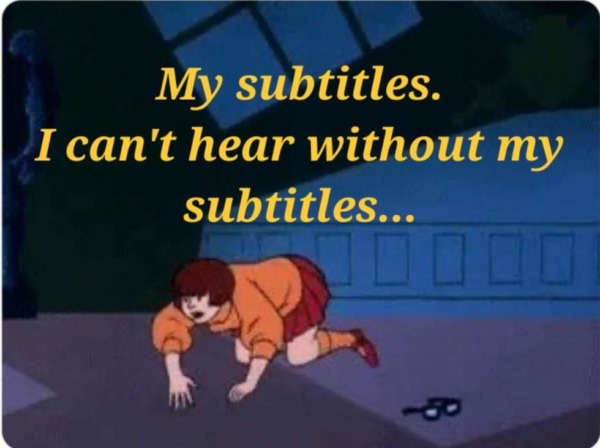Web Captions Differ from 608 and 708 Broadcast Captions: Here’s Why
The Complete Guide to Caption Encoders [Free eBook]
The continued focus on streaming video and online media platforms has big implications for media accessibility services like closed captions and subtitles when it comes to how they work with web platforms. Nielsen reported in August 2022 that video streaming surpassed both traditional broadcast and cable television viewing consumption in July 2022. This is a new milestone for video delivered via IP. And because all broadcast television closed captions should meet CEA-608 or CTA-708 standards, where does that leave web-based platforms and videos?
Many standalone web videos align with FCC regulations and utilize traditional 608 and 708 formatting standards. However, the revolution and continuous development of web closed captioning for various conferencing platforms or social media applications has resulted in formats that provide accessibility services for all viewers, but are supported by different caption application delivery methods. This has allowed for greater versatility, but has also created some inconsistencies between platforms and web captions. Let’s take a closer look at why.
What is a web-based video platform?
Web-based video platforms and players are technologies that enable users and organizations to host and publish videos directly on the web. They deliver content through the internet, which affects how closed captions must be added to video content. Captioning and accessibility standards for web video content varies, but a few major guidelines and recommendations include:
- Federal Communication Commission (FCC) requirements for the captioning of online video
- 21st Century Communications and Video Accessibility Act (CVAA)
- Americans with Disabilities Act (ADA)
- Web Content Accessibility Guidelines (WCAG) 2.0
Streaming services and OTT platforms often straddle the line between web platforms and broadcast television captioning. These kind of platforms may utilize a bit of both elements of web and traditional broadcast, though much is turning over to content delivery via IP, even when displayed on a television.
What are 608 and 708 broadcast captioning standards?
CEA-608 and CTA-708 are the primary broadcast television standards for the encryption and decryption of closed captioning data based on FCC guidelines. 608 closed captions are the standard for analog television transmissions; 708 closed captions are the standard for digital television transmissions. Despite being developed for analog television, 608 captions are still widely used alongside 708 captions due to their compatibility with digital televisions.
Web caption delivery
A major difference between captions going to web-based platforms and captions going to broadcast television is the delivery method. Broadcast television will always be transmitting captions via Line 21 or MPEG user data, depending on whether it follows 608 or 708 standards. Web-based platforms don’t necessarily follow the same data transmission methods as traditional broadcast television has.
Some web-based platforms may require encoder transmission (which does pair videos to 608/708-compliant Line 21 captioning data). Other web-based platforms may need an encoding alternative that does not utilize Line 21 data delivery methods. Some may simply utilize sidecar caption files instead of any kind of encoding workflow.
Virtual Encoders
Virtual encoders function similarly to physical encoders, but don’t require a physical box and connection. These encoders are instead hosted via cloud, requiring clients to connect their stream digitally. Virtual encoders add captioning data and reroute the video stream to a desired platform like YouTube, Facebook, or Vimeo.
Encoding Alternatives
As broadcast streaming has evolved and technology has developed, there is less reason to use physical encoding equipment for digital streaming. Captions can sometimes be included as a separate entity on applications that have built caption functionality directly into their players, such as Zoom and YouTube.
Sidecar Caption Files
Sidecar caption files, such as an SRT or WEBVTT, are a commonly used timed text captioning file format. In television broadcasts, a sidecar file is usually embedded into the signal and allows for viewers to toggle captions on or off. In web videos, sidecar files are uploaded alongside a video. Sidecar files can often be manually edited in a text editor and may support caption styling elements such as placement and italics, but the display of these elements is dependent upon whether or not the player can decode them.
Integrations
Not all web platforms support integrations with captioning vendors, but a growing number of them do! At 3Play Media, we work with 30+ leading web platforms, players, and lecture capture systems to simplify captioning workflows for their users.
Integrations allow for push-button simplicity, letting you automate a captioning workflow without the hassle of additional logins and uploads. Integrations and customizable APIs help save time and assist in centralizing the captioning process for web videos.
How to tell if you need a caption encoder 🤖
How web captions have impacted media accessibility

The popular use of captions and subtitles have inspired hilarious internet memes. Source: r/memes on Reddit.
There is no question that the explosion of web videos over the past decade have driven innovation and visibility for media accessibility services like closed captions. Specifically, the impact on captions has made for an interesting trajectory that continues to evolve alongside technology.
Awareness
Web platforms and video players have helped in raising the awareness of the need for captions and subtitles. They’ve also increased their popularity to the point that as many as 80% of viewers with captions or subtitles turned on are using them for reasons other than hearing loss. Captions are more popular than ever, and much of it is thanks to the widespread availability of the service on web platforms, players, social media, and streaming video.
Versatility
Captions are no longer restricted to a one-size-fits-all broadcast television format; they are much more fluid and flexible when it comes to delivery to platforms, be it virtual encoding, built-in functionality, or sidecar files along for the ride with the viewer. This has created a space for innovative, versatile video captioning solutions and allowed technology to flourish as we begin to navigate beyond the pandemic.
Inconsistency
While web platforms have done a great job of making captions more easily available to viewers across the globe, the boom in the digital development of such platforms and players has come at the cost of consistency. Web captions are not the same everywhere you view them; their display, style, capabilities, and even technical specs tend to be a little different across players/platforms due to varying degrees of limitations and developments between them.
What to consider when ordering captions for web platforms
You may not technically be meeting 608 or 708 broadcast television standards when you add captions via a web-based platform due to the differences in caption application delivery methods; don’t panic–this is fine! Television broadcasts have differing requirements from web video content; and as the line continues to blur between the two–and will probably continue to do so–you may still be looking to meet the same standards. If this is the case, make sure that your captioning vendor creates captions that align with the formatting, stylistic, and accuracy requirements as set forth by the FCC, and discuss your options with experienced accessibility professionals.
Keep in mind that even if the captions are created to these standards, there are still limitations on certain platforms when it comes to aspects such as caption placement and italics. Some sidecar files can support them, but it’s dependent on whether the platform itself can support the additional formatting codes in the sidecar files. This means that even if a captioner styles a sidecar file to match television formatting, it’s up to the player or platform to correctly display them. Some web players are simply not at the point of being able to do this yet.
Concerned about compliance issues? FCC regulations and 608/708 closed captioning generally applies to programming that is broadcast on television (or was previously broadcast on television if displayed via the web.) Learn more about whether your content falls under these parameters.
This blog post is written for educational and general information purposes only, and does not constitute specific legal advice. This blog should not be used as a substitute for competent legal advice from a licensed professional attorney in your state.







